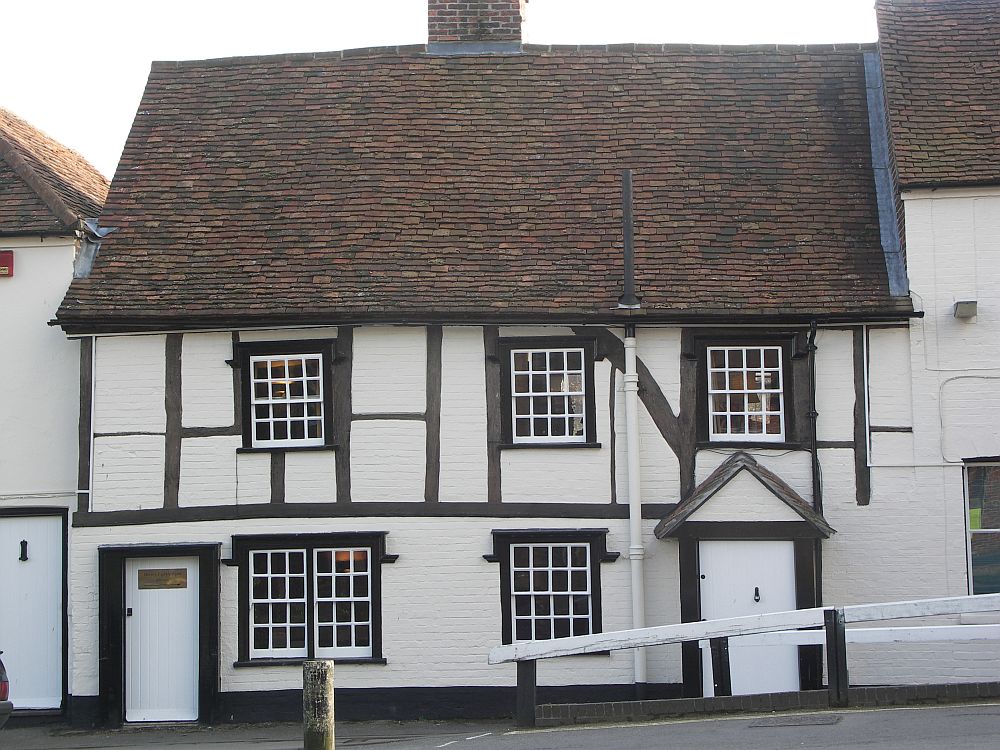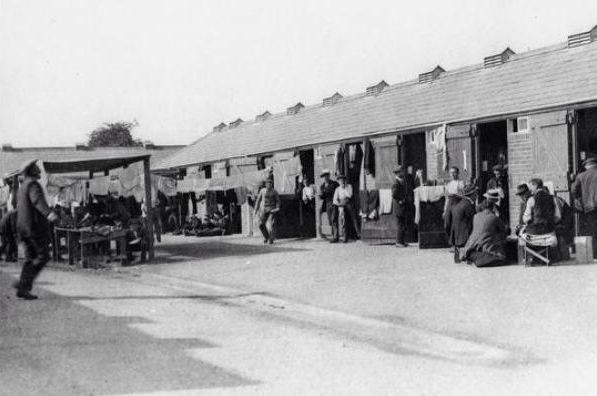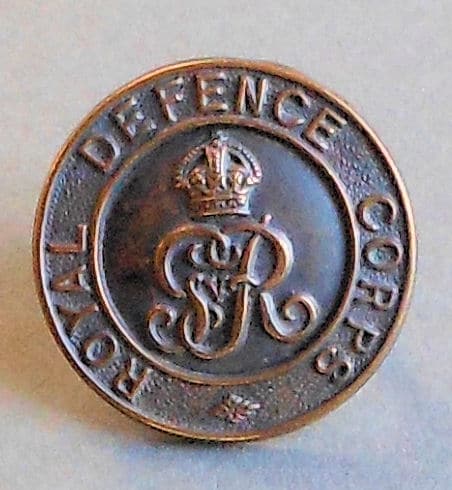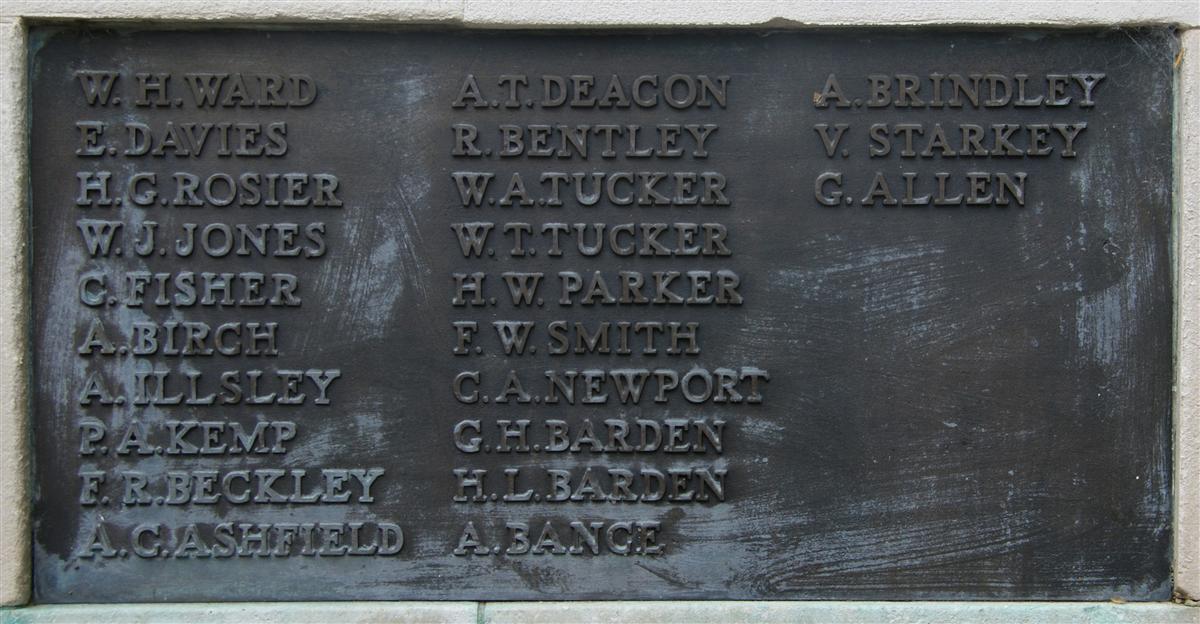William John Jones
Company Quartermaster Sergeant 10762 William John Jones, 263rd Protection Company, Royal Defence Corps
William was born in Battersea, London, in 1868 the son of John Jones, a butcher, and his wife Elizabeth Mary (née Freeman). He was the second child and had five siblings: Elizabeth Sarah Ann (born 1867) and Rosa Maud (1870). George James (1873), Charlotte Eleanor (1875), Florence Mary (1877).
He was raised and educated in Battersea eventually becoming a sign-writer. In 1893 he married Rosina Elizabeth Estick and started his own family. The couple’s first child was born in 1894, a son – named William John after his father. George James (1897), Rose Susan (1898), Ivy Eleanor Isabella (1901), Anne Beatrice (1903) and Edwin Robert (1906) followed, all born in Battersea. Ivy died soon after birth, but the others survived to experience a big family upheaval – a move to Newbury.
It is not known how the move came about, but on 3 December 1907 the three eldest children were admitted into St Nicholas’ National School in Enborne Road. As this was mid-term it probably occurred a matter of days after the family’s arrival in the town.

17/18 West Mills, formerly Pearce's Almshouses. The Jones' lived in the cottage on the right.. |
They lived first in Jack Street, then at 3 Ena Terrace, Russell Road. While in Russell Road another daughter, Florence Mary, was born in 1911, a month before that year’s census was taken on 2 April. Two days after that Annie was admitted to the National School when her address was given as Andover Road. Later that year they made a final move, to West Mills. They lived in a 15th Century cottage which is a former almshouse (now 18 West Mills); Rosina was still resident there in 1950 (she died in 1953 aged 85).
William seems to have made a living as a sign writer in Newbury. However, their accommodation was not indicative of a thriving business, nevertheless he took young George as his apprentice when he left school aged 14.
When war was declared in 1914 William put down his paintbrushes and volunteered to serve his country. On 30 August 1914 he enlisted into the 4th Battalion, Royal Berkshire Regiment. This was a Reserve Battalion comprising mainly ex-servicemen (it is likely that William had served for a period in his youth, but no record of it has been uncovered).

The stables at Newbury Racecourse in use as an internment camp in 1914. © IWM (Q 53359) |
The men were soon found employment as guards at an internment camp for enemy aliens that was established in the stables at Newbury Racecourse in August 1914. In the following months captured German troops began to arrive in to another tented camp for prisoners of war.
As winter began conditions in the makeshift camps were deemed unsuitable, the internees were moved to the Isle of Man and the PoWs to ships anchored off the Isle of Wight. The men guarding the camps were involved in the transfer of the internees as escorts, enjoying a free trip to the Isle of Man, but returned to Newbury before accompanying the PoWs to the prison ships. In April 1916 they were transferred to the Royal Defence Force en masse doing the same job under a new name. By this time more permanent PoW camps had been established on land.

The badge of the Royal Defence Corps |
So, William found himself serving in 263 Company, Royal Defence Corps, but, in 1917, things changed somehow – he began to be promoted - from Private to Lance Corporal (6 October 1917) to Lance Sergeant (27 Feb 1918) and finally to Acting Quartermaster Sergeant on 16 July 1918.
The end of the war did not mean a rapid end of duty, William was still serving in May 1919 when he was found medically unfit to continue and was sent home, his official discharge followed on 5 June.
He returned to Newbury, but his health deteriorated, and he died at home, aged 51, on 23 July 1920.
 William's name on Newbury War Memorial. (upper left) |
Rosina was awarded a widow’s pension by the Army – which was only available to the widows of ex-soldiers whose death was attributable to their army service. Nevertheless, he remains uncommemorated by the Commonwealth War Graves Commission.
He was buried in Shaw Cemetery (plot 407) on 27 July 1918.
Locally he is remembered on Tablet 6 of the Newbury Town War Memorial, the parish memorial board and roll of honour in St Nicolas’ Church.

Find a memorial :
| Died this day: | |
| 15 January 1943 | |
| L C Lawrence | |
| Newbury |

Like this site? Show your appreciation through a donation to a great charity.